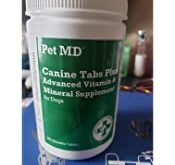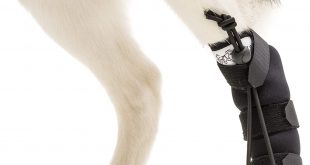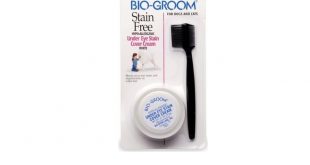Everyone knows there are 4 seasons: winter, spring, fall, and summer. Dog owners, however, have come to learn that there’s a fifth season that is deadlier than hot summers and frozen winters. Flea season.
Fleas and ticks are some of the most common parasites that can infect your household pets. They love anything with fur. Cats, dogs, and any four-legged creature could easily become infected. Flea infestations can cause hair loss, itching, and even flea allergy dermatitis.
You simply can’t ignore flea or tick infestations. Besides, why ignore them when there’s a perfectly easy-to-use solution like Activyl that can get rid of fleas quickly and efficiently? Here’s what you need to know about this intriguing new flea and tick treatment.
What is Activyl?
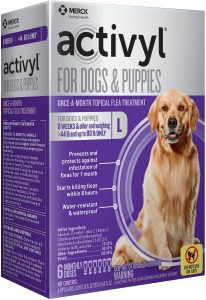
Activyl is a topical product that is used to fight ticks and fleas in dogs. Not only does it target adult fleas, but it also eliminates the various stages of the fleas’ life cycle, wiping them out completely!
Activyl is produced by Merck, a well-known pharmaceutical company that has been making top-grade veterinary medicines for a long time. Activyl is just another of their many incredible products.
On the chemical level, Activyl contains several components, the most important of which is indoxacarb. This chemical ingredient is the secret behind Activyl’s numerous mechanisms of action.
How does Activyl work?
The great thing about Activyl is its versatility. It works like magic but in several ways. First of all, it doesn’t just attack fleas from the outside, but it also attacks from the inside. Sounds intriguing, huh? Well, here’s how.
After you apply Activyl to your dog’s fur, you don’t need to wait for fleas to ingest it. They don’t need to bite your pup’s skin or ingest blood either. As soon as they come in contact with the topical solution, Activyl goes to work.
The active ingredient indoxacarb starts triggering a series of enzyme-related reactions inside the fleas and ticks’ bodies. These reactions cause the fleas and ticks to become in a state of paralysis. They can’t eat, they can’t reproduce, and they definitely can’t bite your dog.
Now here’s the question: what happens to something that’s paralyzed and can’t even eat to survive? It dies. That’s exactly what happens to the fleas and ticks.
In addition to that, Activyl works similarly by attacking flea eggs and larvae. That means Activyl targets almost every stage in the fleas’ life cycle, uprooting the infestation altogether!
This is also why Activyl is great for both treatment and prevention. It stops the life cycle of fleas and ticks at every step preventing infections from developing in the first place.
No wonder Activyl gets rid of over 99% of fleas. It’s one thorough product! The best part is that it does this quickly, eliminating around 90% of the fleas and ticks within the first 12 hours of application. Perfect speed and efficiency!
Once you’ve treated your dog’s flea infestation, Activyl doesn’t just fade away after doing its job. It keeps your dog protected for another 4 weeks after application! Any new fleas or ticks that show up during this period don’t stand a chance. They are eliminated immediately.
In other words, you’ve got a fast and effective product that both treats and prevents flea and tick infestations, all in one bottle. What more could you ask for?
How to apply Activyl
First and foremost, before you get to the application part, choose the right setting. Pick a room or location where your dog feels relaxed and at home. Also, you should take the necessary precautions in case anything gets spilled. Now you’re ready.
First, take out the applicator from one of the foil pouches. Keep the applicator in an upright position and make sure it’s pointing away from your face. You don’t want to apply Activyl to yourself accidentally.
Next, fold the tip backward gently until it snaps open. Now you’ve got the solution and you’re ready to apply some to your dog. Next comes the tricky part. You can’t just pour it onto your pup’s fur and expect it to work. You need to go deep.
With your fingers, part as much of your dog’s fur as you can, exposing the skin layer below. Ideally, you want to target the area between the shoulder blades of your dog when using Activyl. Next, place the tip of the applicator against the area of skin you just exposed.
Squeeze the applicator gently, slowly allowing the solution to come in contact with your dog’s skin. Don’t do it too fast or the solution will simply run off. You don’t want that. You want it to concentrate on the exposed skin area.
Each area requires a certain amount of Activyl solution which we’ll discuss below. After you’ve applied the solution, make sure you wash your hands thoroughly. Also, try to stay away from the treated areas so you don’t interfere with Activyl’s magic or wipe it off.
Where to apply Activyl
Let’s face it. Your dog probably isn’t going to stay put and let you apply any kind of solution unless it’s well-trained or simply lazy. That’s why it’s important to apply Activyl in the right spot on your first try because you might not get a second chance.
“The right spot” depends on how big your dog is. If your pup is small, then you can squeeze the entire contents of the applicator onto the area between its shoulder blades. It should do the trick.
If you’re dealing with a medium pup or a big dog, you’ll need to apply Activyl to several locations along its back. Start with the area between the shoulder blades and work your way down to the tail. Apply the contents of the applicator evenly to 3-4 spots in between.
You want to cover as much area as you can with the Activyl. At each location between the shoulders and tail, part the hair and apply an adequate amount directly onto your pup’s skin. This will help reach as many fleas and ticks as possible.
There’s no need to add too much to one spot. It’s more important to cover as much ground (or skin) as possible, rather than focus on one spot.
Symptoms- How to know you need Activyl

Activyl is effective, yes. It’s also completely safe. However, that doesn’t mean you should just use it haphazardly without making sure your dog needs it. There are certain signs and symptoms to look for that can help you determine if you have a flea or tick infestation on your hands.
The one good thing we can say about fleas is that they’re easy to spot. You can literally see them bouncing around on your dog. Areas like the abdomen, tail, and head are the easiest to spot. You see any of those tiny brown creatures jumping around and you know you need Activyl right away!
That being said, there are other signs you can look for to confirm your suspicions. Here are a few examples that indicate your dog might need Activyl.
- Small dark grains of sand: If you find little dark grains of sand in your pup’s fur, well, those aren’t sand. They’re actually flea dirt or droppings.
- Tiny white grains: Guess what? Those white grains aren’t rice either. They are tiny little flea eggs which means your pup has been infested for enough time for the fleas to begin their life cycle.
- Allergic dermatitis: Inflamed skin because of all the flea and tick bites
- Scratching, biting, or licking excessively
- Hair loss: This is caused by all the excessive scratching and inflammation which eventually causes hair follicles to come loose and fall out
- Hot spots
- Pale gums: This happens when fleas have been feeding off your dog for a long time, leading to malnutrition.
- Tapeworms
Complications of Flea and Tick Infestations
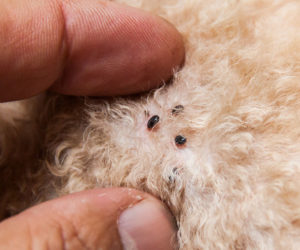
The problem with flea and tick infestations is that you can’t just ignore them and expect them to go away. You ignore the problem, it gets worse. The sooner you find solutions like Activyl, the smaller the chance of complications is.
One of the complications Activyl helps prevent is anemia. This can happen when there’s a huge number of fleas or ticks feeding off of your pup. The resulting malnutrition can turn into anemia and in severe cases, it can warrant a blood transfusion.
For adults, it might take a long time for the depletion to manifest in the form of a disease. On the other hand, if your pet is a young pup chances are it hasn’t had the chance to develop enough red blood cells for itself and its unwelcome guests. This can be fatal.
Another complication you should be wary of is something called FAD or flea allergy dermatitis. This happens when your dog is sensitive to flea saliva and reacts badly to it.
Its skin becomes inflamed, reddens, and eventually turns into severe hot spots. Activyl can easily prevent all of this.
Activyl Safety Profile

Let’s be clear on one thing: Activyl is perfectly safe for your dogs. It has one of the best safety profiles on the market when it comes to treating flea and tick infestations. That being said, there are a few precautions you should be aware of.
First of all, if you’re using Activyl for a puppy under 4 pounds, then you might want to check with your vet first. The same goes for pups under 8 weeks of age. It won’t be dangerous, but it’s still better to be 100% sure of its safety for that age group.
The same goes for pregnant and lactating dogs. You should avoid using Activyl on them. While it might be safe, there haven’t been enough studies on pregnant or lactating females to guarantee absolute safety.
The great thing about Activyl is that you don’t have to worry about side effects. Unless your dog is uniquely sensitive to the active ingredient in Activyl, it should be perfectly safe.
After applying Activyl to your dog, make sure it doesn’t get in its eyes because it can cause some irritation. The same goes for yourself. Be careful not to get the solution on your hands and wash your hands thoroughly before eating, drinking, or using the toilet.
Frequently Asked Questions- Activyl

Should I give my pup a bath before using Activyl?
There’s no reason to give your dog a bath before using Activyl for fleas and ticks. However, after applying it, you should definitely stay away from baths and water. You don’t want it to wash off before the magic happens.
Give your dog at least 24 to 48 hours before shampooing or bathing it. Swimming shouldn’t be allowed either. That being said, once the 48 hours are over, your dog can play, swim, and bathe as much as it likes.
Activyl is waterproof and doesn’t rinse off easily so there’s no need to worry. Just give it the first day or so to work its magic before exposing it to water.
My dog has itchy skin, can I still use Activyl?
Itchy skin is usually accompanied by severe inflammation and redness. It’s a form of dermatitis which basically means inflammation of the skin. You’ll usually find dogs suffering from allergic dermatitis when they have a severe flea infestation.
The fleas are what triggers the itching and redness. Luckily, Activyl is perfectly safe in these cases. It’s designed for dogs that are suffering from flea allergy dermatitis or FAD.
Do I need to use Activyl all year to keep fleas away?
It would be pretty expensive if you had to use a product all year-round just to keep flea infestations at bay. Fortunately, you only need to use Activyl once every four weeks or so just to make sure the fleas don’t come back. You don’t need to apply it daily.
What is the difference between Fleas and Ticks?
While treatment methods are the same, there are a few differences that any reliable dog owner should know. For example, fleas and ticks have different preferences. While fleas tend to hop around looking for a dog, cat, or pet to infest, ticks like to hide in your house and wait.
It’s not uncommon to find ticks hiding around in your carpet, furniture, and bedding. They tend to hide, multiply, and invite their friends. Once your dog passes by, they quickly latch onto it and begin causing an infection.
Another point of difference between fleas and ticks is their lifestyle. Fleas are more ride or die. Once they find a good host like your pup, they stick to it and don’t let go. They grow, reproduce, and feed off of that one host until they die.
Ticks, on the other hand, like to jump from one host to another. This makes them dangerous because they can easily infect more than one pet at the same time.
There are several other differences between ticks and fleas but the important thing is that they can both be treated easily with Activyl. You don’t need to run tests to determine which pest is annoying your pup. Get rid of both!
Can I use Activyl for both my Dog and Cat?
Be careful not to mix up the different types of Activyl on the market. If you have a dog then only use the Activyl type specially made for dogs. At the same time, after applying Activyl for dogs, don’t let your cats near any of the solution.
If your pets are friendly and tend to lick one another, don’t allow your cat to lick the solution off of your dog. It might not be dangerous or fatal, but it’s still unpreferred.
What happens if I miss a dose of Activyl?
Don’t worry, it’s no big deal. Just apply the dose whenever you remember. That being said, if you happen to remember right before the next dose then you can skip the missed dose altogether and just continue with your dosing schedule.
Never apply two consequent doses. Double-dosing won’t have an added effect, it might actually be counter-productive.
What Happens if I give my dog an Overdose of Activyl?
While it’s highly unlikely for your dog to overdose on Activyl, you should go to the vet right away if you suspect this is the case.
Conclusion
Your dog has been an unwilling host for long enough. It’s about time you’ve gotten rid of these unwanted ticks and fleas. Activyl can easily get rid of them for you in a matter of hours, but the important thing is that you follow up.
Always keep an eye out for signs of a flea or tick infestation. Use proper prevention methods and keep your house clean and tick-free. After eliminating these pesky parasites, be consistent with a monthly Activyl dose just to make sure they never come back.
Activyl is something you can rely on to keep your home safe and free from unwanted guests. After all, what in the world is more important than your furry little friend?
 Total Pooch Dog Supplements, Tear Stain Removers, De-wormers, Tylosin for Dogs and other great products.
Total Pooch Dog Supplements, Tear Stain Removers, De-wormers, Tylosin for Dogs and other great products.
